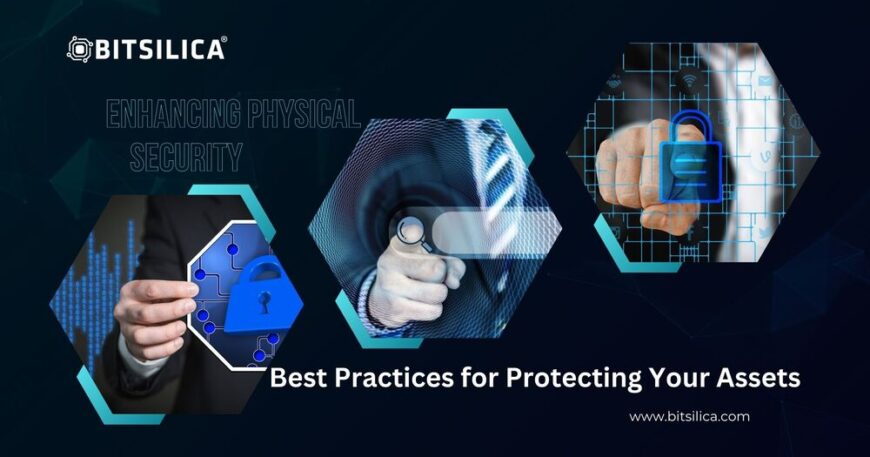Enhancing Physical Security: Best Practices for Protecting Your Assets
Introduction
While digital security often takes the spotlight, physical security is equally important in protecting sensitive information and assets. Physical security measures safeguard against unauthorized physical access to facilities, equipment, and data. This blog post will explore best practices for ensuring robust physical security, providing real-world examples to emphasize their importance.
Understanding Physical Security
Physical security involves protecting people, hardware, software, networks, and data from physical actions and events that could cause serious loss or damage. This includes protection from fire, natural disasters, burglary, theft, vandalism, and terrorism.
Key Components of Physical Security:
• Access Control: Restricting access to buildings, rooms, and equipment to authorized personnel only.
• Surveillance: Monitoring facilities using cameras and alarm systems.
• Environmental Controls: Implementing measures to protect against environmental threats like fire and floods.
Example: In 2014, the National Security Agency (NSA) reported a breach caused by a contractor stealing classified information by physically removing it from the facility, highlighting the need for stringent physical security measures.
Implementing Access Controls
Access control systems ensure that only authorized individuals can enter restricted areas, reducing the risk of unauthorized access.
Best Practices:
• ID Badges and Key Cards: Issue ID badges and key cards to employees and require them to be displayed at all times.
• Biometric Systems: Use biometric authentication methods such as fingerprint or iris scanners for sensitive areas.
• Visitor Management: Implement a visitor management system to track and control access for non-employees.
Example: A tech company implemented a biometric access control system, preventing unauthorized access to its data centers and significantly reducing the risk of insider threats.
Utilizing Surveillance Systems
Surveillance systems, including security cameras and alarm systems, help monitor activities and detect unauthorized access or suspicious behavior.
Best Practices:
• Security Cameras: Install cameras at entry points, sensitive areas, and common spaces to monitor activities.
• Alarm Systems: Use alarm systems to detect unauthorized access, especially after hours.
• Regular Monitoring: Ensure surveillance systems are monitored regularly, either by on-site security personnel or through a security service provider.
Example: In 2019, a bank’s surveillance system detected unauthorized access attempts after hours, allowing security personnel to intervene and prevent a potential breach.
Securing Workstations and Equipment
Physical security extends to individual workstations and equipment, protecting them from theft and unauthorized access.
Best Practices:
• Cable Locks: Use cable locks to secure laptops and other portable devices.
• Docking Stations: Utilize docking stations with security features for laptops.
• Secured Storage: Store sensitive equipment in locked cabinets or rooms when not in use.
Example: A university reduced laptop thefts by 80% after implementing a policy requiring cable locks and secured storage for all portable devices.
Implementing Environmental Controls
Protecting against environmental threats such as fire, floods, and power outages is crucial for maintaining physical security.
Best Practices:
• Fire Suppression Systems: Install fire suppression systems, such as sprinklers and extinguishers, in all facilities.
• Flood Protection: Use flood barriers and moisture sensors in areas prone to flooding.
• Uninterruptible Power Supply (UPS): Implement UPS systems to protect equipment from power surges and outages.
Example: In 2020, a data center prevented significant damage during a flood by using flood barriers and relocating critical equipment to higher floors.
Training Employees on Physical Security
Educating employees about physical security protocols ensures they understand their role in maintaining a secure environment.
Best Practices:
• Regular Training: Conduct regular training sessions on physical security measures and protocols.
• Emergency Drills: Perform periodic emergency drills to prepare employees for potential security incidents.
• Clear Policies: Develop and communicate clear physical security policies and procedures.
Example: A manufacturing company reduced security incidents by 50% after implementing regular physical security training and emergency drills for all employees.
Establishing a Security Culture
Creating a culture of security within the organization encourages employees to prioritize and uphold physical security measures.
Best Practices:
• Leadership Support: Ensure leadership actively supports and promotes physical security initiatives.
• Employee Engagement: Encourage employees to report suspicious activities and suggest improvements to security measures.
• Recognition Programs: Implement recognition programs to reward employees who demonstrate exemplary security practices.
Example: An organization that established a strong security culture saw a 40% reduction in physical security breaches and increased employee engagement in security initiatives.
Conclusion
Physical security is a critical aspect of protecting sensitive information and assets. By implementing access controls, utilizing surveillance systems, securing workstations, implementing environmental controls, training employees, and establishing a security culture, organizations can significantly enhance their physical security posture. Stay vigilant and proactive in securing physical environments to protect both personal and organizational assets.





